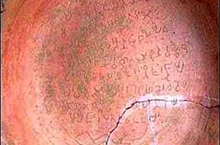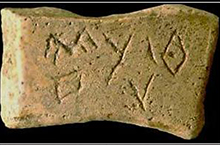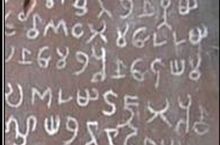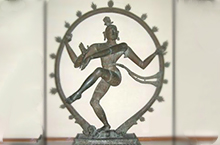Ancient Tamil History

Tamil Brahmi script
Old Tamil scripts in pottery
Tamil-Brahmi, or Tamili, is a variant of the Brahmi script used to write the Tamil language. These are the earliest documents of a Dravidian language, and the script was well established in the Chera and Pandyan states, in what is now Tamil Nadu, Kerala, Andhra Pradesh and Sri Lanka.

Indus valley civilisation
The fragments of pottery are about 5,500 years old
Modern Tamil which is remotely related to Indus Valley script claims an antiquity that was never heard before. According to Dr Richard Meadow of Harvard University, the director of the Harappa Archaeological Research Project, primitive inscriptions found on pottery from Indus Valley archeological sites, may pre-date all other known writing. The earliest known writing was etched onto jars before and after firing. Experts believe they may have indicated the contents of the jar or be signs associated with a deity

Tamil Brahmi script
Brahmi script of an unknown age unearthed from Tamilnadu in 1998
Similar script on pottery was unearthed recently from Tamilnadu, India. Though these artifacts according to archeologists belong to a later period, a striking similarity is certainly observable. Dr.Kodumudi Shanmugam of Tamilnadu has constructed a Table showing the modification that occurred to Tamil script from a very early period

Dynamism in action
Siva as cosmic dancer in bronze (11 AD)
Some recent findings in Karur (Tamilnadu) show the intricate jewelry of early Christian era. Tamils used a special embossing technique in creating human figures on golden rings. These delicate depictions indicate not only their intricate designing ability but also the existence of sophisticated art forms in those days. Prof.George Hart of University of California, Berkeley believes that this could be the fore runner of the later more sophisticated philosophical rendering of Siva Nataraja in bronze. He points out the flow, dynamism and the delicate carving in this ring as important features to note.
Ancient India had considerable trade links with the Middle East, Europe (Greece and Rome) as well as with China. This trade was carried out over land partly along what came to be alluded to as the silk route and partly through maritime trade. By the time of Pliny, the Roman historian, Roman trade with India was thriving, and indeed creating a balance of payments problem for the Roman Empire. In South India, which had a thriving maritime trade, Roman coins even circulated in their original form, albeit slashed at times as a gesture disclaiming intrusions of foreign sovereignty?